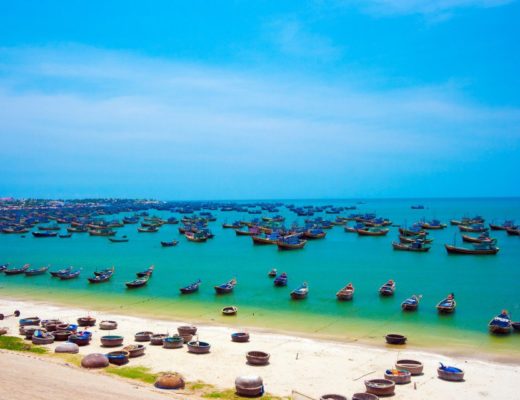Over the past decades witnessed great movements towards textile digital printing in the textile industry like others including digital cameras, CDs, DVDs and so forth. Advances in digital technologies – let’s say a ‘real’ digital camera – have made shooting pictures easier for amateur photographers yet as for someone who thirst for ‘true’ art of photography, an ‘old’ motion picture camera is irreplaceable.
Unlike digital printed textiles, hand – made fabrics are unique yet beautiful. Music lovers are still falling in love with classical music records worth at least hundreds of dollars. International Exhibition of Hand – made Textiles sponsored by UNESCO is going to be held in Clermont – Ferrand in France in September, 2012 with the motive to promote and preserve traditional and religious artifacts.
Vietnamese brocade fabrics are also on display at the exhibition. Vietnamese famous designer Minh Hanh takes advantages of the beauty of Vietnamese brocade fabrics made by ethnic minorities in North – West Vietnam and Central Highlands. In fact, most Vietnamese textile products are fabricated by H’Mong locals, mostly skillful and meticulous craftsmen, in Ha Giang Province and Bac Ha Province and others in Central Highlands. Minh Hanh – inspired fashion collection fascinated more than a thousand guests of all nationalities at the exhibition in France – The Empire of Fashion.
Vietnamese brocade fabrics vary according to their textile materials and designs. In the old and present days, hand – made brocade products are closely associated with the habits and customs of most Vietnamese ethnic minorities, for example, brocade fabrics serve as essentials, goods or even used as marriage portions. Textile engineering driven by manpower brings beautiful brocade textile with unique yet wonderful colors and patterns.
Brocade textile manufacturing
Textile materials are mostly raw fibers of cotton together with antiar skin. Old – fashioned wooden looms transform smooth white cotton fibers into brocade. Beautiful brocade colored are true amazing artworks.
Dying color
+ Black Color: a mixture of indigo leaves or a special type of dark – blue leaves soaked and fresh mud.
+ Dark Red or Brown Color: dark red or brown dyes mix different types of tree barks.
+ Blue Color: the baked shells of the snails living in springs mixed with lime water, Krum or indigo leaves.
+ Red Color: the bark of the century – old Krung trees
+ Red – Brown Color : A boiled mixture of tree bark, vinegar and alum. Textile fibers are dyed at high temperature of about 80 degrees.
+ Yellow: turmeric fabric dye.
The final step is to brush dyed textile fibers, clean and dry them out.
Local brocade fabric are strongly attached to the traditional customs of the Vietnamese ethnic minorities, each has its own unique hand – made brocade textile.
+ H’Mong: H’Mong brocade textile embroidered with cruciform, rhombic or triangular patterns .
+ Dao: most of Dao brocade textile dyed in light – red color. Dao’s bright colored brocade textile embroidered with dark – blue patterns looks beautiful and elegant.
+ Tay: Tay’s brocade textile is distinctive in its arrangement of rhombic dark colored patterns on smooth white background.
+ Nung: Nung people usually wear colorful dresses, in particular, the colors of the sleeves and the shirt tail are different from its body.
+ Khmer: Unlink textile dying in North – West Vietnam, Khmer textile engineering enables texture patterns to be directly woven into the fabric.
+ Cham: Dark or red colored brocade textile decorated with geometrical patterns.
+ H’re: H’re brocade textile dyed in black and red color and its beautiful patterns depicts meaningful pictures painted with natural colors and geometrical shapes.
+ Bana: The main colors of the Bana’s brocade are black, red and white.
+ Lolo: The colors of the Lolo’s brocade fabric are mostly bright colors. They are produced by sewing a shaped fabric onto a larger fabric, a patchwork square or a foundation fabric.
+ Cotu: The patterns of the Cotu’s brocade textile are simple yet beautiful. It varies according to designs, mostly, with multiform color and unique vignettes.
Vietnamese brocade handicrafts serve as meaningful presents and souvenirs. Fashion designers inspire their creations with traditional brocade textile patterns, besides its advantages also seen in graphic design and home decoration. Vietnamese brocade textile brings out the spiritual and heritage value of Vietnam fashion in particular and the world’s art of textile as a whole.




